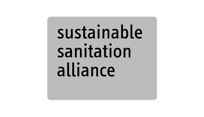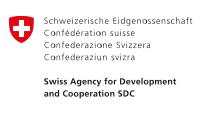Anaerobic Digestion (AD) is a process through which organic materials decompose, generating biogas and a nutrient-rich digestate. Biogas is a mix of methane (CH4), carbon dioxide (CO2) and other trace gases, which can be used as fuel and converted to heat, electricity or light U.6. The AD process occurs in oxygen-free air-proof reactor tanks called digesters, also known as biogas reactors.

A wide range of different organic waste can be used as the substrate (or feedstock) for biogas production including, (from the most to least potent biogas yield), energy crops, organic food/kitchen waste, animal manure and sewage sludge. Large amounts of fibrous material, such as straw, should be avoided. Most substrates require pre-treatment before digestion including sorting (if not already done at source), shredding to reduce particle size and adding water before the mixture is fed into the AD system. Feedstock with high water content (> 60%) can be processed without pre-treatment. The main products of AD are biogas and digestate. The energy value of biogas derives from the contained methane and has typically lower heating values of 21–24 MJ/m³ or around 6 kWh/m³. Burning biogas in stoves is the easiest way of using biogas energy. The slurry (digestate) produced is rich in nitrogen. In a typical AD process temperatures do not rise above 40°C and therefore only partly deactivates weed seeds and pathogens. If faecal sludge is used as feedstock, the digestate needs treating before being used as a fertiliser.
Design Considerations
In humanitarian settings, low-tech wet digestion systems operating in continuous mode are recommended. Biogas digester designs for such systems may be a fixed-dome, floating-drum or tubular polybag digester. Fixed-dome and floating-drums are built (partially) underground; tubular polybag digesters are implemented as prefabricated mobile equipment. In a fixed dome, the volume of the reactor is constant. As gas is generated it exerts pressure and displaces the slurry upwards into an expansion chamber. When the gas is removed, slurry flows back into the reactor. The pressure can be used to transport the biogas through pipes. As the dome is under pressure, this system needs experienced and skilled construction to ensure gas tightness and its underground construction means it should be considered as permanent infrastructure. In a floating-drum, the drum rises and falls with the production and withdrawal of gas; in a tubular digester, the digester inflates and deflates accordingly. The digester of a floating-drum is generally constructed underground but the drum is above ground; the exception is a digester for a smaller household-scale system which can be fully above ground. Tubular polybag digesters are mobile but quite fragile and susceptible to mechanical damage, reducing their life span to two to five years. The hydraulic retention time (HRT) in the reactor should be at least 15 days in hot climates and 25 days in temperate climates, requiring the reactor to contain 15-20 days of waste volume (including water if required). For feedstock with pathogens (e.g. faeces), an increase of HRT to 60 days should be considered. The size of digesters ranges from 1,000 L for a single family to 100,000 L or more for institutional or public applications. Because the digestate production is continuous, provision must be made for its storage, treatment, use and/or transport away from the site.
Materials
A biogas digester can be made of bricks, cement, steel, sand, wire (for structural strength), waterproof cement additives (for sealing), water pipes and fittings, a valve and a prefabricated gas outlet pipe. The gas-holding chamber must be constructed to be airtight (not allowing oxygen in or generated gas out). Prefabricated solutions from specialist suppliers include geo-bags, reinforced fibre plastic modules and router-moulded units.
Applicability
Before designing an AD system, the potential biogas yield must be assessed according to the type of substrate. Ideally, an AD reactor is located close to the source of waste generation (to minimise waste transport distances) and close to the biogas user (to minimise the gas transport distances). ADs can be constructed at different scales but require regular feeding. It is not suitable for the acute phase of an emergency as the microorganisms in the digester need time to establish. It is particularly suited to rural areas where animal manure can be added and digestate is needed as a fertiliser U.5 and gas for cooking U.6. AD is less appropriate in colder climates (
Operation and Maintenance
To start the AD process, the digester must be inoculated with anaerobic bacteria (e.g. by adding cow dung). Once the appropriate microorganisms have established, waste must be added regularly (ideally daily) or the bacteria will starve. Digestate is primarily liquid and should be removed from the overflow frequently; the amount and its characteristics will depend on the volume of the tank relative to the input of solids, the amount of indigestible solids and the ambient temperature. Gas production should be monitored and the gas used regularly. Water traps should be checked frequently and valves and gas piping cleaned to prevent corrosion and leaks. Depending on the design and the inputs, the indigestible materials accumulating at the bottom of the reactor should be emptied and the reactor cleaned and checked (with caution) every five to ten years.
Health and Safety
The digestate is partially sanitised but likely to still contain active pathogens; during digestate removal workers should therefore be equipped with proper Personal Protective Equipment (PPE). Depending on its end use, digestate may require further treatment before use in agriculture. There are dangers resulting from the flammable gases and cleaning the reactor can be a health hazard; appropriate safety precautions (wearing PPE and ensuring good ventilation) should be taken X.4.
Costs
This is a medium-high-cost option for humanitarian settings. Costs for capacity development and training of operators and users must be budgeted for.
Social Considerations
Social acceptance may be limited in communities unfamiliar with using biogas or digestate. Acceptability can be increased through shared management and shared benefits (gas and fertiliser) from AD though benefits may be unevenly distributed amongst users of a shared digester, leading to conflict.
Key Decision Criteria
Input Products
Organic Food/Kitchen Waste
Output Products
Biogas
Digestate
Response Phase
Application Level
Management Level
Space Required
high,medium
Technical Complexity
medium
Objectives & Key Features
Biogas production, Nutrient recycling, Waste diversion from disposal and GHG mitigation
Strength & Weakness
- Generation of biogas and fertiliser
- Small land area required (if the structure is built underground)
- Long service life (robust)
- Requires expert design and skills for construction
- Incomplete pathogen removal, the digestate might require further treatment
- Medium-high level investment costs






